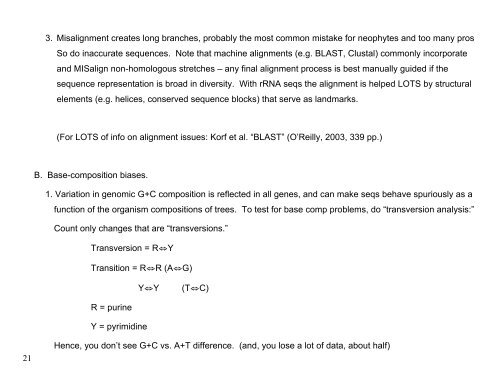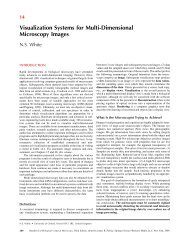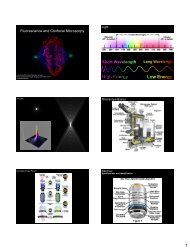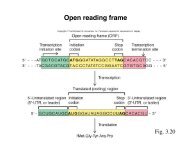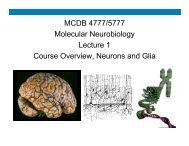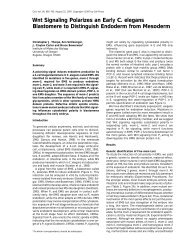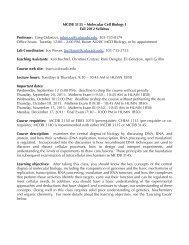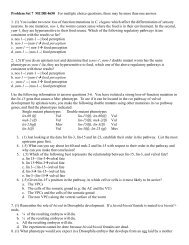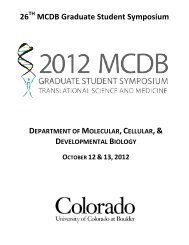Lecture 3: A Brief Overview of Molecular Phylogeny - MCD Biology
Lecture 3: A Brief Overview of Molecular Phylogeny - MCD Biology
Lecture 3: A Brief Overview of Molecular Phylogeny - MCD Biology
Create successful ePaper yourself
Turn your PDF publications into a flip-book with our unique Google optimized e-Paper software.
21<br />
3. Misalignment creates long branches, probably the most common mistake for neophytes and too many pros.<br />
So do inaccurate sequences. Note that machine alignments (e.g. BLAST, Clustal) commonly incorporate<br />
and MISalign non-homologous stretches – any final alignment process is best manually guided if the<br />
sequence representation is broad in diversity. With rRNA seqs the alignment is helped LOTS by structural<br />
elements (e.g. helices, conserved sequence blocks) that serve as landmarks.<br />
(For LOTS <strong>of</strong> info on alignment issues: Korf et al. “BLAST” (O’Reilly, 2003, 339 pp.)<br />
B. Base-composition biases.<br />
1. Variation in genomic G+C composition is reflected in all genes, and can make seqs behave spuriously as a<br />
function <strong>of</strong> the organism compositions <strong>of</strong> trees. To test for base comp problems, do “transversion analysis:”<br />
Count only changes that are “transversions.”<br />
Transversion = R"Y<br />
Transition = R"R (A"G)<br />
R = purine<br />
Y = pyrimidine<br />
Y"Y (T"C)<br />
Hence, you don’t see G+C vs. A+T difference. (and, you lose a lot <strong>of</strong> data, about half)


